Yu Hong-june, a prominent art historian in Korea and chair professor at Myongji University in Seoul, said in his book "My Exploration of Cultural Heritage," "The more you know, the more you see." Even if a place is famous or on a plain ordinary day, a landscape can be seen differently depending on the viewer's knowledge and perspective.
Korea.net launched this year a series on domestic cultural and tourist spots. For famous places easily found on the internet, we approach them from new perspectives focusing on people and their stories. In addition, we cover spots often overlooked to promote them as potential tourist attractions. Thus readers can discover hidden but attractive gems of tourism nationwide.
By Kim Hayeon
Photos = Lee Jun Young
Video = Anais Faure
Goseong-gun County, Gangwon-do Province
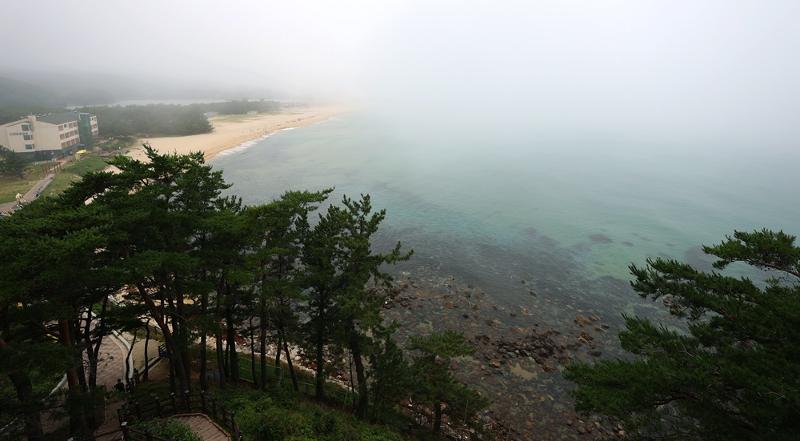
This is Hwajinpo Beach as seen from the former vacation home of North Korea founder Kim Il Sung located in the town of Geojin-eup in Goseong-gun County, Gangwon-do Province.
The strong scent of pine trees coming through a window, a dense fog as if it rained and Hwajinpo Beach, which boasts a panoramic view through trees.
This scenic view is from the second floor of the former vacation home of Kim Il Sung, the founder of North Korea and first chairman of the North's powerful State Affairs Commission, in the town of Geojin-eup in Goseong-gun County, Gangwon-do Province.
Now known as Hwajinpo Castle, the home was known as his summer home for two years from 1948 as he stayed there with his wife Kim Jong Suk and son Kim Jong Il.
Near the area are the former vacation villas of President Rhee Syngman, the first leader of the Republic of Korea, and his Vice President Lee Gi-bung.
Two days before the 72nd anniversary of the outbreak of the Korean War, Korea.net staff on June 23 headed north to Geojin-eup, which is near the inter-Korean border.
Located in the northernmost part of the province, Goseong-gun carries the scars of the nation's modern history of war and division. After World War II ended in 1945, the U.S. and the Soviet Union split the Korean Peninsula in half along the 38th Parallel.
According to the demarcation line at the time, the county was designated part of North Korean territory. Under the 1953 armistice agreement, Goseong-gun was split into north and south, and this is why Kim Il Sung's vacation home is in the latter part.
Facing the East Sea, Hwajinpo Lake is the country's largest lagoon with a circumference of 16 km, surrounded by 40,000 square m of pine forests. The area is also famous for its beautiful view of the blue ocean, green mountains and sandy beach with pine trees.
After arriving at the shared parking place, Korea.net staff walked up the stone stairs to reach the vacation home of Kim Il Sung, a facility easily found in the forest to the left of the beach.
Covering 258 square m, the two-story building was designed and completed in 1938 by an exiled German architect as a chapel for the Canadian missionary Sherwood Hall and his wife.
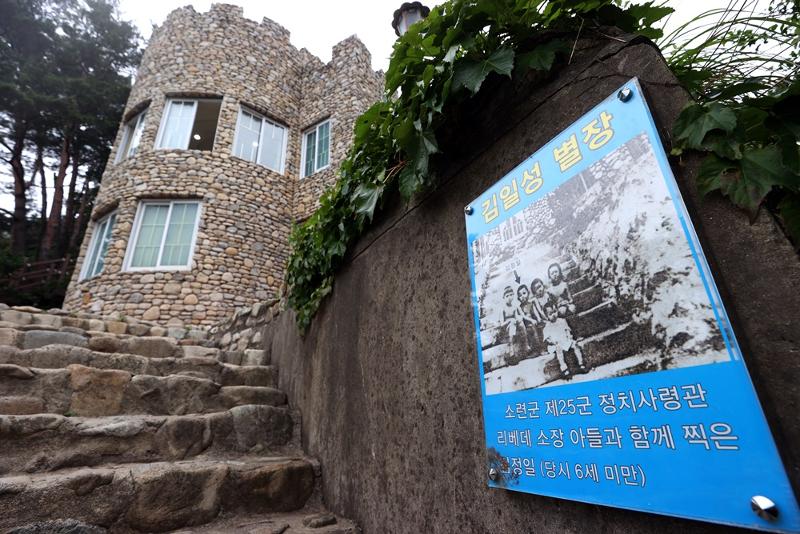
These are the stairs leading up to the former vacation home of Kim Il Sung. Shown here is where his son Kim Jong Il, the father of incumbent North Korean leader Kim Jong Un, in August 1948 posed for a picture sitting next to the son of Soviet military commander Nikolai Lebedev at the entrance of the home.
On the side wall of the stairs leading up to the villa is a photo of Kim Jong Il (son of Kim Il Sung and father of the North's incumbent leader Kim Jong Un), who was then age 6, sitting next to the son of Soviet military commander Nikolai Lebedev.
Now a history and national security museum, the place displays photos and materials on Kim Il Sung and the Korean War. The second floor shows his bedroom and clothes and next to the room on a circular balcony is a spectacular view of Hwajinpo Beach.
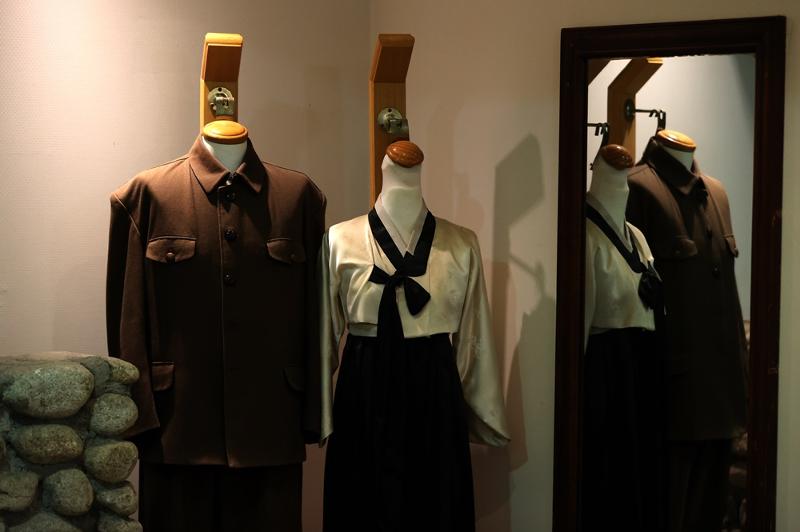
Replicas of North Korean clothing that Kim Il Sung and his wife would have worn are displayed on the second floor of Kim's former vacation home.
The top of the building offers a view of the Hwajinpo landscape at a glance featuring Geumgangsan Mountain, one of the most beautiful mountains on the peninsula. The former vacation home of the nation's first vice president Lee is also seen at a closer distance.
The vacation villa of President Rhee is a 10-minute walk from Kim Il Sung's home, with the former being a single-story building with a simpler look.
After finishing his studies in the U.S., President Rhee fell in love with Hwajinpo during his first visit there in 1910 to meet a missionary. In 1954, after the Korean War had ended, he visited it again 44 years later after the Republic of Korea Army regained the area. He resigned as president in 1960 and spent his last days in this beautiful area until leaving for Hawaii, showing how special Hwajinpo was to him.
Restored in July 1999, the house is filled with traces of the nation's first president and his Austrian wife Franziska Donner. All of the displayed materials and items donated by the couple's families were used by the two.
The interior has three sections: study, bedroom and living room. The study has his desk and art he received as presents and the bedroom contains old beds, suitcases and pictures of the couple. The fishing rod in the living room and pictures of him smiling while fishing show his human side.
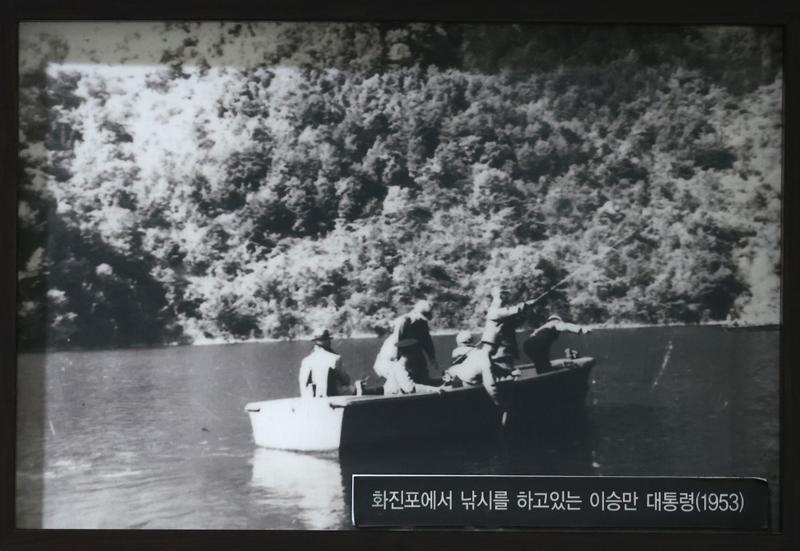
This photo shows President Rhee Syngman in 1953 fishing in Hwajinpo Lake in front of his vacation house.
Following the stairs outside the villa leads to Rhee Syng-man Hwajinpo Memorial Hall, which was opened in 2007.
Covering 205 square m, the hall displays items from his life like letters, writings and clothes from his stay in the U.S., independence movements abroad, the government in exile and related diplomatic activities, and his presidential term.
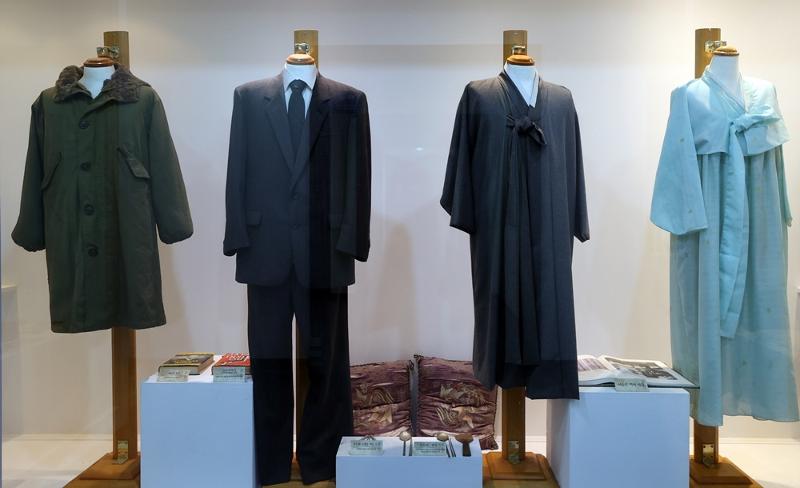
Personal items of the country's first President Rhee Syngman are displayed at Rhee Syng-man Hwajinpo Memorial Hall.
Between the vacation homes of the president and Kim Il Sung is a villa with an area of 66 square m where Vice President Lee used to stay.
Used as a resort for foreign missionaries in the 1920s, the villa served the same function for North Korean cadres following liberation from Japanese colonial rule. When the 1953 truce ending the Korean War was declared, the home was used by the wife of Vice President Lee. It stayed empty until 1999, when it was reopened as a museum of history and national security displaying the Lee couple's possessions like kettles and candlesticks.
Hwajinpo presents both the reality of Korea, the world's only divided country, and traces of the first leaders of both Koreas. One look at Hwajinpo is all it takes to see why it was the choice spot of relaxation for the two men.
hayeounk8@korea.kr
![[Hidden charms of Korea: Yangyang-gun County] Surf's up at northeastern beaches in fa...](/upload/content/image/ae651b3ab2774d1dad51f3f895b3fa49_20220802110524.jpg)
![[Hidden Charms of Korea: Sinan-gun County] ③ Travel tips and tricks for 'slow city' S...](/upload/content/image/9d16eb97f80f4d6db4e367ee860aa936_20220725093322.jpg)
![[Hidden Charms of Korea: Sinan-gun County] ② Story of tidal flats](/upload/content/image/9cc50cd2403f4dec8c47e19b4f91ca99_20220712084207.jpg)
![[Hidden charms of Korea: Sinan-gun County] ① 'Angel' islands connect people to the se...](/upload/content/image/38e7654d4b9b4c069d11a02491d842c6_20220715113047.jpg)
![[Hidden charms of Korea: Namhae] ③ Exploring 'treasure island'](/upload/content/image/74d2c17bb0b14fba836dd57fb7a2acfe_20220426171319.jpg)
![[Hidden charms of Korea: Namhae] ② Stories of a tourist hotspot](/upload/content/image/c324412691c944c9ba33d6f535b813d1_20220426155551.jpg)
![[Hidden charms of Korea: Namhae] ① Trip for thinking about nothing](/upload/content/image/593df28b85e54b1e8dd6c086d9fa6b3e_20220427151613.jpg)